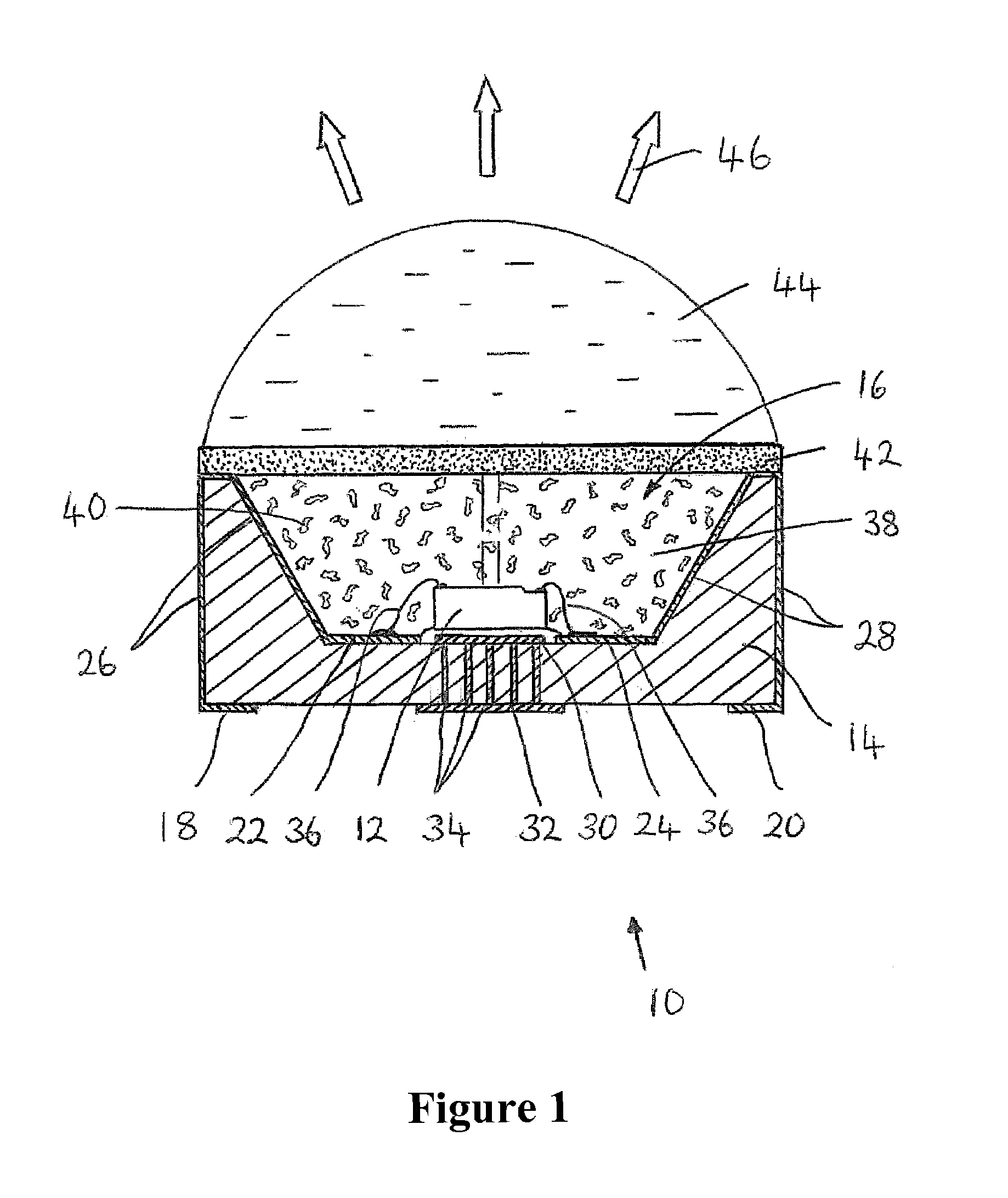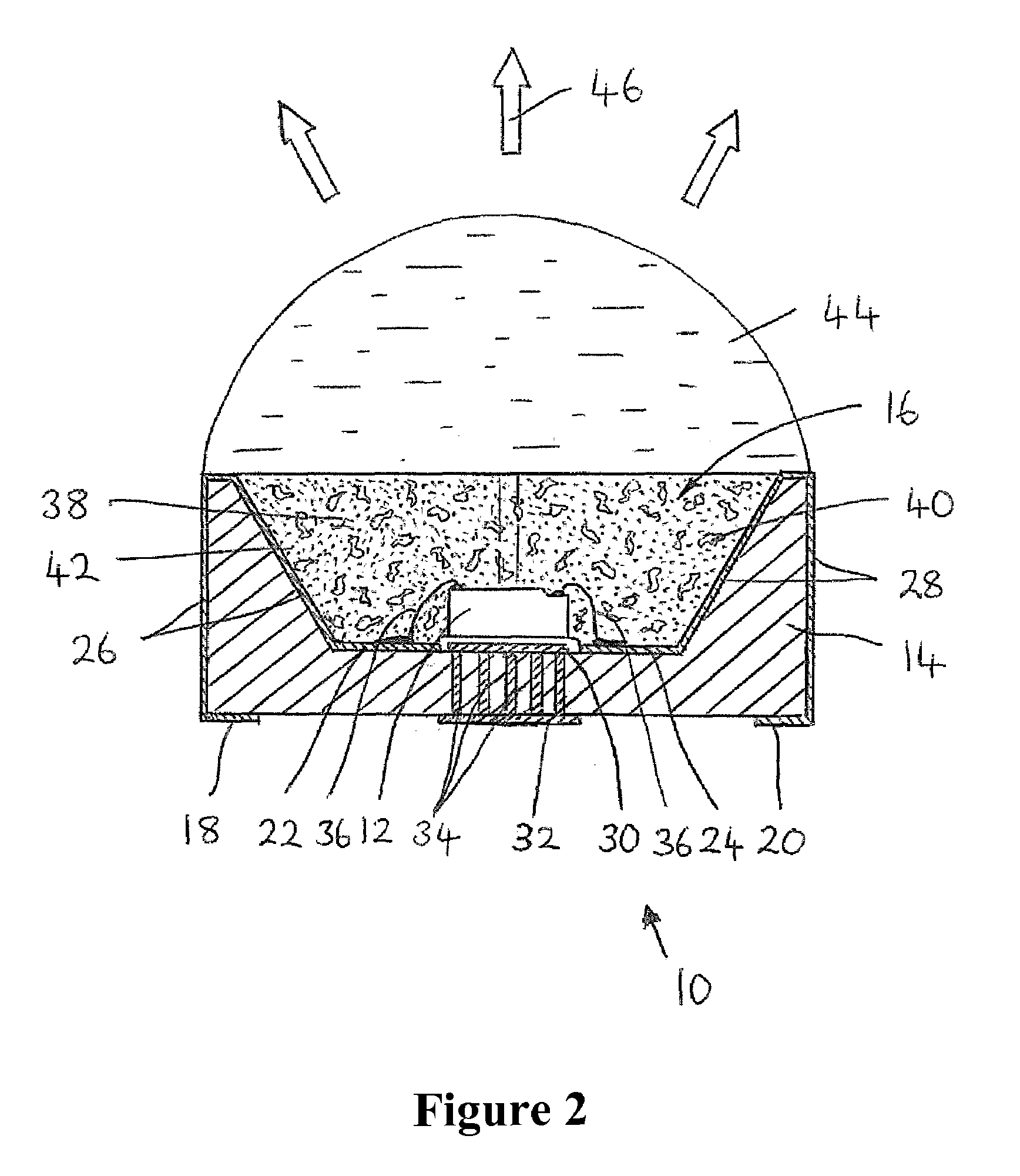Light emitting device with phosphor wavelength conversion
a technology of light emitting devices and phosphor, which is applied in the direction of solid-state devices, spectral modifiers, lighting and heating apparatus, etc., can solve the problems of thermal degradation of phosphor materials, limit the maximum operating current of devices, and devices can be too bulky for many applications, so as to improve thermal stability
- Summary
- Abstract
- Description
- Claims
- Application Information
AI Technical Summary
Benefits of technology
Problems solved by technology
Method used
Image
Examples
Embodiment Construction
[0027]Embodiments of the invention are directed to light emitting devices, in particular those based on light emitting diodes (LEDs), in which at least the light emitting surface of the LED is coated (covered) with a light transmissive (transparent) medium containing particles of a thermally conducting material distributed throughout its volume. The phosphor (photo-luminescent) material used to achieve a selected color of emitted light can be provided on a surface of the transparent encapsulation, dispersed together with the thermally conducting material within the transparent encapsulation material or provided on the surface of, or incorporated within, an optical component such as a lens that is used to focus or otherwise direct light emitted by the device. The transparent, thermally conducting, encapsulation provides a conduction path for the flow of heat away from the light emitting surface of the LED. In contrast to known LEDs that incorporate a small surface area of phosphor, t...
PUM
 Login to View More
Login to View More Abstract
Description
Claims
Application Information
 Login to View More
Login to View More - R&D
- Intellectual Property
- Life Sciences
- Materials
- Tech Scout
- Unparalleled Data Quality
- Higher Quality Content
- 60% Fewer Hallucinations
Browse by: Latest US Patents, China's latest patents, Technical Efficacy Thesaurus, Application Domain, Technology Topic, Popular Technical Reports.
© 2025 PatSnap. All rights reserved.Legal|Privacy policy|Modern Slavery Act Transparency Statement|Sitemap|About US| Contact US: help@patsnap.com



